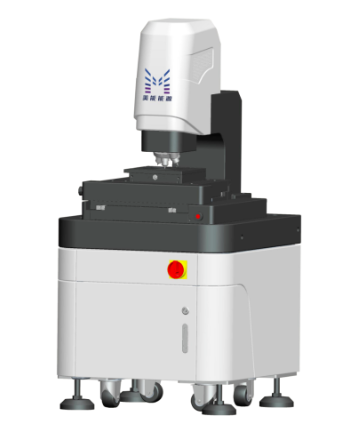
Quantum Efficiency Tester
PL/EL Integrated System
PV-Reflectumeter
3D Confocal Microscope
In-Line Four Point Probe Tester
Four Point Probe Tester
In-Line Thin Film Thickness Tester
Raman Spectrometer
FTIR Spectrometer
Spectrophotometer
Automatic Spectroscopic Ellipsometer
Contact Resistance Tester
Ultra depth of field 3D microscope
Auto Visual Tester
VMM PV Vision Measuring Machine
Solar Cell Horizontal Tensile Tester
Steady State Solar Simulator for Solar Cell
Solar Cell UV Aging Test Chamber
Solar Cell Comprehensive Tensile Tester
Visual Inspection Tester
Wet Leakage Current Tester
PV Module EL Tester
PV Module UV Preconditioning Chamber
Steady State Solar Simulator for PV Module
Current Continuous Monitor
Potential Induced Degradation Test
Bypass Diode Tester
LeTID Test System
Reverse Current Overload Tester
Impulse Voltage Tester
Hipot Insulation Tester
Ground Continuity Tester
Hipot Insulation Ground Tester
Damp Heat Test Chamber
Humidity Freeze Test
Thermal Cycle Test Chamber
Dynamic Mechanical Load Tester
Static Mechanical Load Tester
Hail Impact Tester
Robustness of Termination Tester
Module Breakage Tester
Cut Susceptibility Tester
Peel Shear Strength Tester
Universal Testing Machine (Single-arm)
Universal Testing Machine (Double-arm)
Glass Transmittance Tester
Acetic Acid Test Chamber
EVA Degree of Crosslinking Test System
Junction Box Comprehensive Tester
Drop ball tester
Semi-automatic scanning four-probe tester
Stylus Profilometer
Maximum Power Point Tracker
Perovskite Glass Transmittance Tester
Perovskite P1 Laser Scribing Multifunctional Testing Machine
Perovskite Online PL Tester
Perovskite Online Sheet Resistance Tester
Online Perovskite Film Thickness Tester
Perovskite Process Inspection Workstation
Portable IV Curve Tester
Portable EL Tester
Portable Thermal Imaging Tester
Solar Module Multi-Channel Testing System
PV Inverter Power Quality Tester
Drone EL Tester
IV Tester
IVEL Cell Sorting Machine
Challenges Faced by Photovoltaic Industrialization of Perovskite Photovoltaic Technology
Date : 2024-03-22Views : 170
As an emerging third-generation photovoltaic technology, perovskite solar cells were launched in 2009. In just a dozen years, the photoelectric conversion efficiency increased from 3.8% to 25.7%. As the efficiency of crystalline silicon solar cells gradually approaches the theoretical limit, high-efficiency, low-cost perovskite cells have attracted more and more attention from the global photovoltaic industry. In this issue of Millennial Solar, we will learn about the problems faced by the industrialization of perovskite technology.
Market issues
1. The stability of perovskite cells in long-term service
The stability of perovskite solar cells is the primary challenge in practical applications. Under the stimulation of external conditions such as water vapor, high temperature, and ultraviolet radiation, perovskite cells are prone to degradation and their performance is seriously attenuated. There are two main measures to improve the stability of perovskite cells. One is to optimize the composition and microstructure of the cell itself, and the other is to optimize the packaging materials and packaging process of perovskite photovoltaic modules.
Some manufacturers have announced that their products have passed international standards such as IEC61215, and based on this, it is speculated that the service life of perovskite and crystalline silicon photovoltaic modules is equivalent, ensuring that the power generation efficiency remains above 80% after 25 years of service. However, considering that perovskite has not yet achieved mass production and application, its stability remains to be tested.
2. Efficiency and quality issues of large-area perovskites
The efficiency and quality of large-area perovskites are low, mainly due to the limitations of large-area thin film deposition equipment and process levels. Unlike crystalline silicon modules, which connect multiple small-area cells in series and parallel, perovskite modules have a coating area of square meters. At present, there is a gap between the large-area uniform continuous coating performance of domestic vacuum coating equipment and the international advanced level. In addition, process debugging on large-area coating production lines is also difficult.
3. Shortcomings in key components of photovoltaic production line equipment
After years of rapid development, China's photovoltaic industry has basically achieved localization of all production lines, but some key components of equipment still rely on imports. For example, the technical indicators and quality reliability of vacuum pumps, radio frequency power supplies, valves, etc. in vacuum coating equipment, and lasers, galvanometers, etc. in laser etching equipment are far behind those of mainstream international manufacturers.

3D Confocal Microscope

E-mail: market@millennialsolar.com
3D Confocal Microscope ME-PT3000 is a high-speed confocal scanning microscope for accurate and reliable 3-dimensional (3D) measurements. Real-time confocal microscopy images are achieved through fast optical scanning modules and signal processing algorithms.
ME-PT3000 is an optical instrument specially used in the photovoltaic industry to inspect the quality of grid lines and textures on the surface of photovoltaic cells. Based on the principle of optical technology, combined with precision Z-direction scanning module, 3D modeling algorithm, etc., the device surface is non-contactly scanned and a 3D image of the surface is established. The height and width of the grid lines on the photovoltaic cells and the texture on the surface are measured through the system software. The number of pyramids is quantitatively tested to provide feedback on the quality of photovoltaic cell cleaning, texturing and screen printing processes.
TOPCon solar cell technology has broad prospects and the potential for rapid development in the solar industry. When considering an emerging technology like this, you still need to compare it with other popular photovoltaic technologies on the market to better see its prospects. If you have any questions, please contact us.

































































